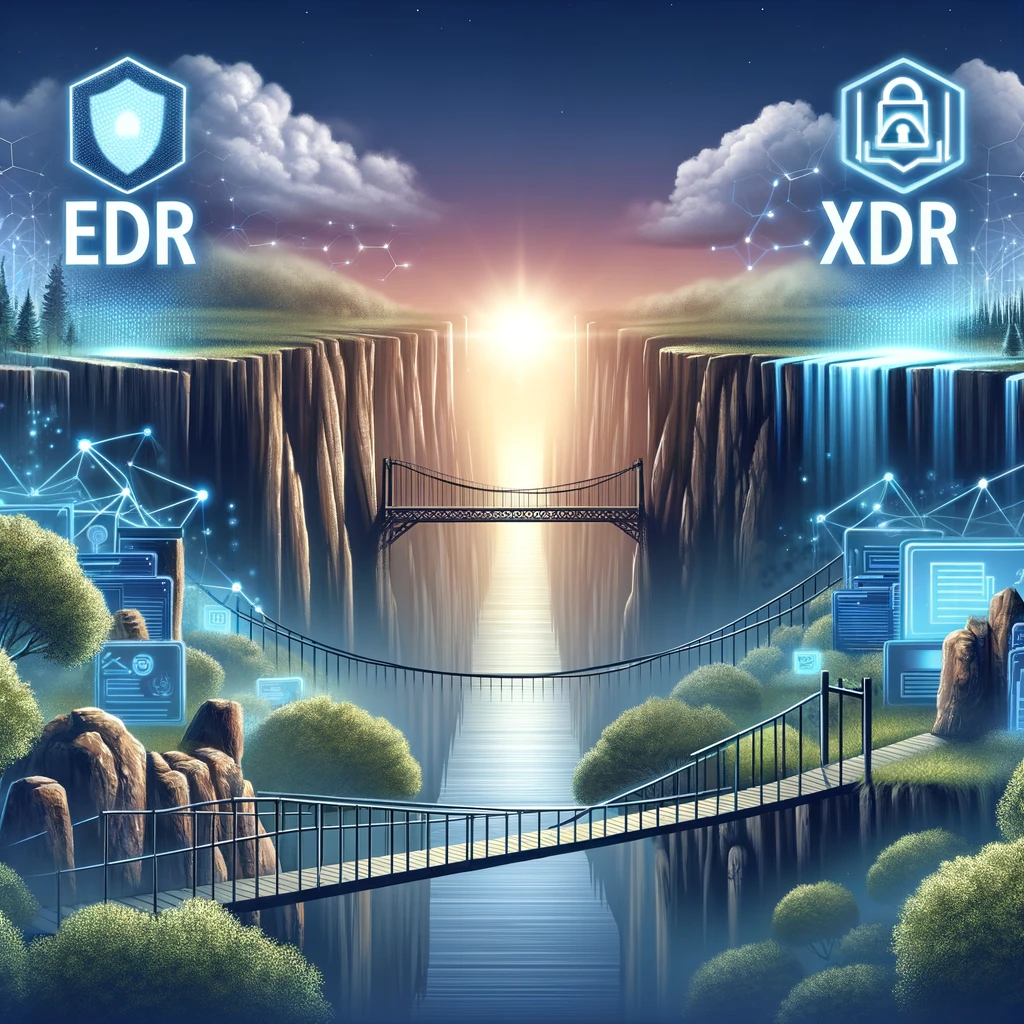In the rapidly changing world of cybersecurity, the need for more sophisticated and integrated solutions has never been more pressing. The introduction of technologies such as Endpoint Detection and Response (EDR) and Extended Detection and Response (XDR) marks a significant evolution in our approach to securing digital environments against ever-evolving threats.
Understanding EDR
At the heart of modern cybersecurity strategies lies Endpoint Detection and Response (EDR). EDR systems are designed to focus specifically on endpoint security, providing the means to detect and respond to threats across devices. This capability is crucial in a landscape where endpoint vulnerabilities can be exploited by cybercriminals to gain unauthorised access to networks.
The Rise of XDR
Building on the foundation laid by EDR, Extended Detection and Response (XDR) emerges as a more comprehensive approach to cybersecurity. XDR extends beyond mere endpoint protection, integrating multiple security layers to offer a unified response mechanism that spans across networks, clouds, and applications. This evolution from EDR to XDR represents a shift towards a more holistic view of threat detection and response, addressing the complexities of modern cyber threats more effectively.
Differences Between EDR and XDR
The primary distinction between EDR and XDR lies in their scope and integration capabilities. While EDR is device-centric, focusing on endpoints, XDR provides a holistic view of the entire IT ecosystem. XDR’s ability to integrate broader data sources and security measures allows for faster threat detection and response, significantly improving efficiency and reducing the complexity of managing security in diverse environments.
Why We Are Moving to XDR
The transition towards XDR reflects an acknowledgment of the need for more cohesive security strategies capable of keeping pace with the sophistication of complex, multi-vector attacks. XDR’s capacity to consolidate and analyse data from a variety of sources not only enhances visibility but also improves the overall control of the security posture, making it an indispensable tool in the arsenal against cyber threats.

Implementing XDR: Challenges and Considerations
However, embracing XDR is not without its challenges. The shift necessitates careful planning, adequate resource allocation, and, in many cases, significant modifications to existing security operations. A successful transition to XDR involves considerations such as comprehensive staff training, seamless data integration, and strategic vendor selection to ensure compatibility and effectiveness of the new systems.
The move from EDR to XDR represents a pivotal development in the field of cybersecurity. It signifies a step forward in our collective approach to defending against digital threats. Managed Services Australia stands at the forefront of this transition, offering the expertise and solutions necessary to help businesses navigate the complexities of modern cybersecurity. As we embrace XDR, we move closer to achieving a more secure and resilient digital future.
To explore how our managed IT services can elevate your cybersecurity from EDR to the comprehensive protection of XDR, get in touch with our expert team today. Dial 1300 024 748, shoot us an email at [email protected], or schedule a session with one of our cybersecurity specialists. Embrace the future of cybersecurity with us.






